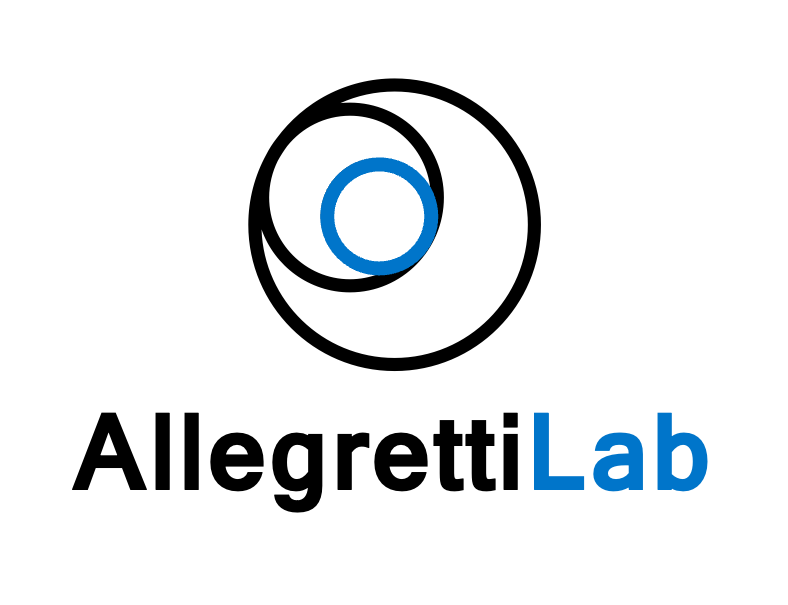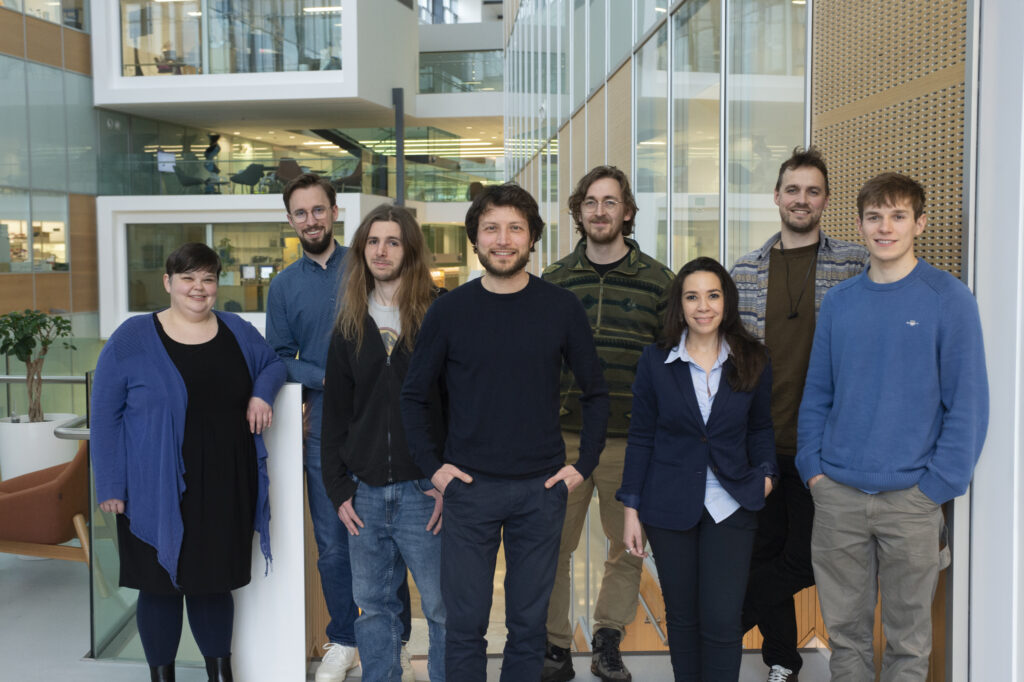
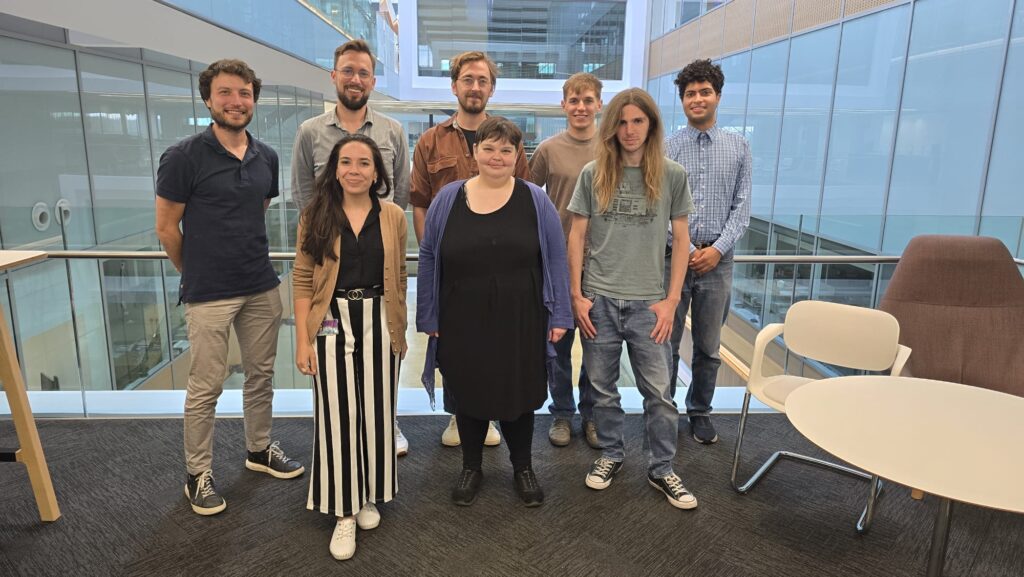
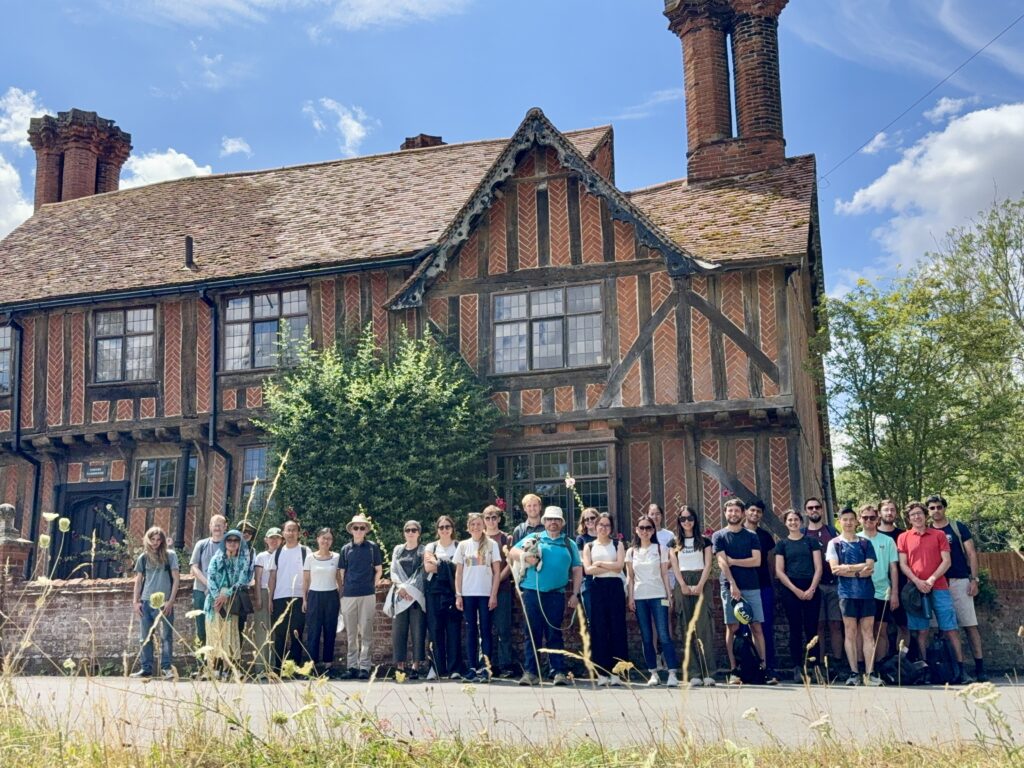
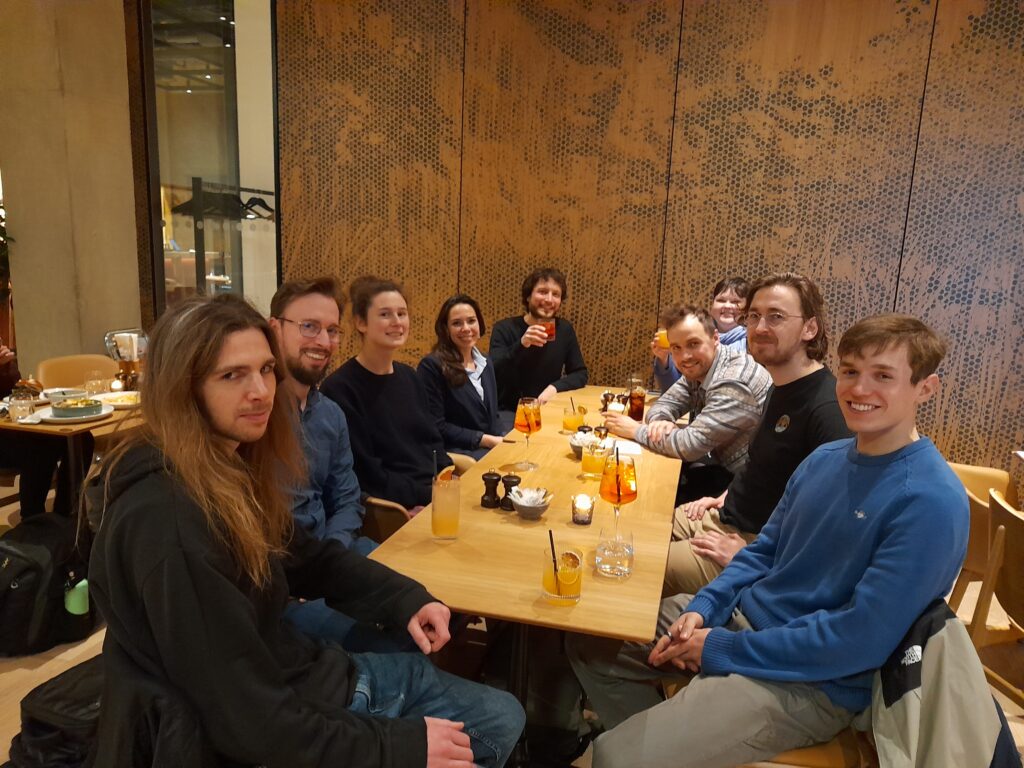
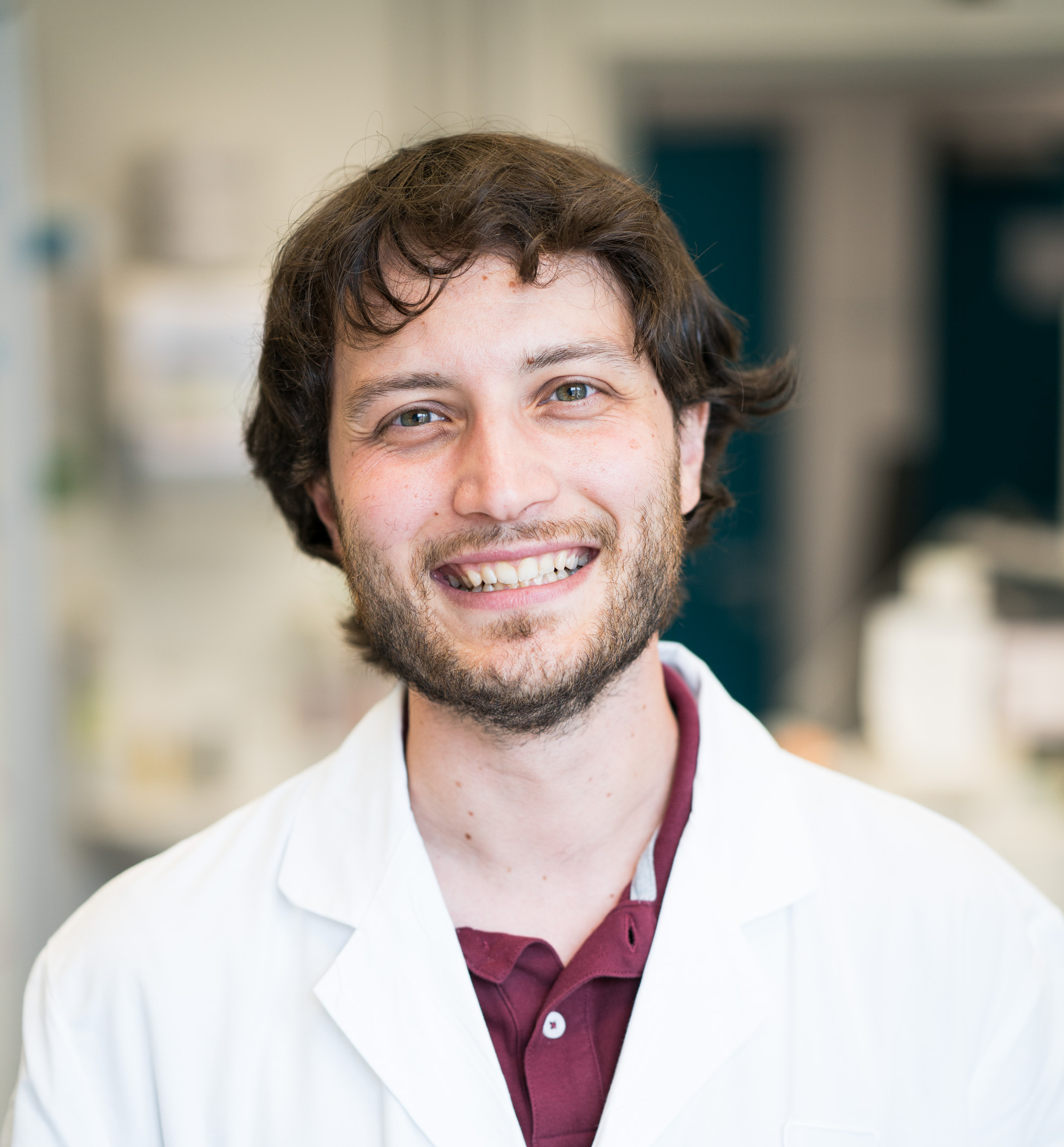
MATTEO ALLEGRETTI
Group Leader
Matteo Allegretti studied Biological sciences at the University of Roma Tre where he also obtained his Master in Biochemistry of macromolecules with a thesis on lipid vesicles as cellular models in an origin-of-life scenario (Luisi group).Due to his passion for membrane systems, borders between an internal and an external environment, he moved to the Max Planck Institute of Biophysics as PhD student to investigate the structure/function of membrane proteins using cryogenic electron microscopy (single particle analysis), in particular mitochondrial ATP-synthases (Kühlbrandt group). There he pioneered the use of the new direct electron detectors to understand the mechanism of action of molecular machines.As postdoc he joined the European Molecular Biology Laboratory to investigate the architecture of membrane-embedded proteins directly in their cellular context using electron cryo tomography (Beck group). His focus has been on the nuclear pore complex conformational adaptations and subsequent nuclear envelope remodelling upon environmental perturbations and protein knock-outs, using an integrative structural biology approach. In the Laboratory of Molecular Biology (Cambridge) Matteo’s group will continue investigating the macromolecular basis of nuclear remodelling in health and disease with a focus on the interaction nucleus-cytoskeleton. The group will continue developing and using novel imaging technologies to describe the mechanisms which give rise to macromolecular and therefore cellular plasticity.
Blue-sky: @matteoall.bsky.social
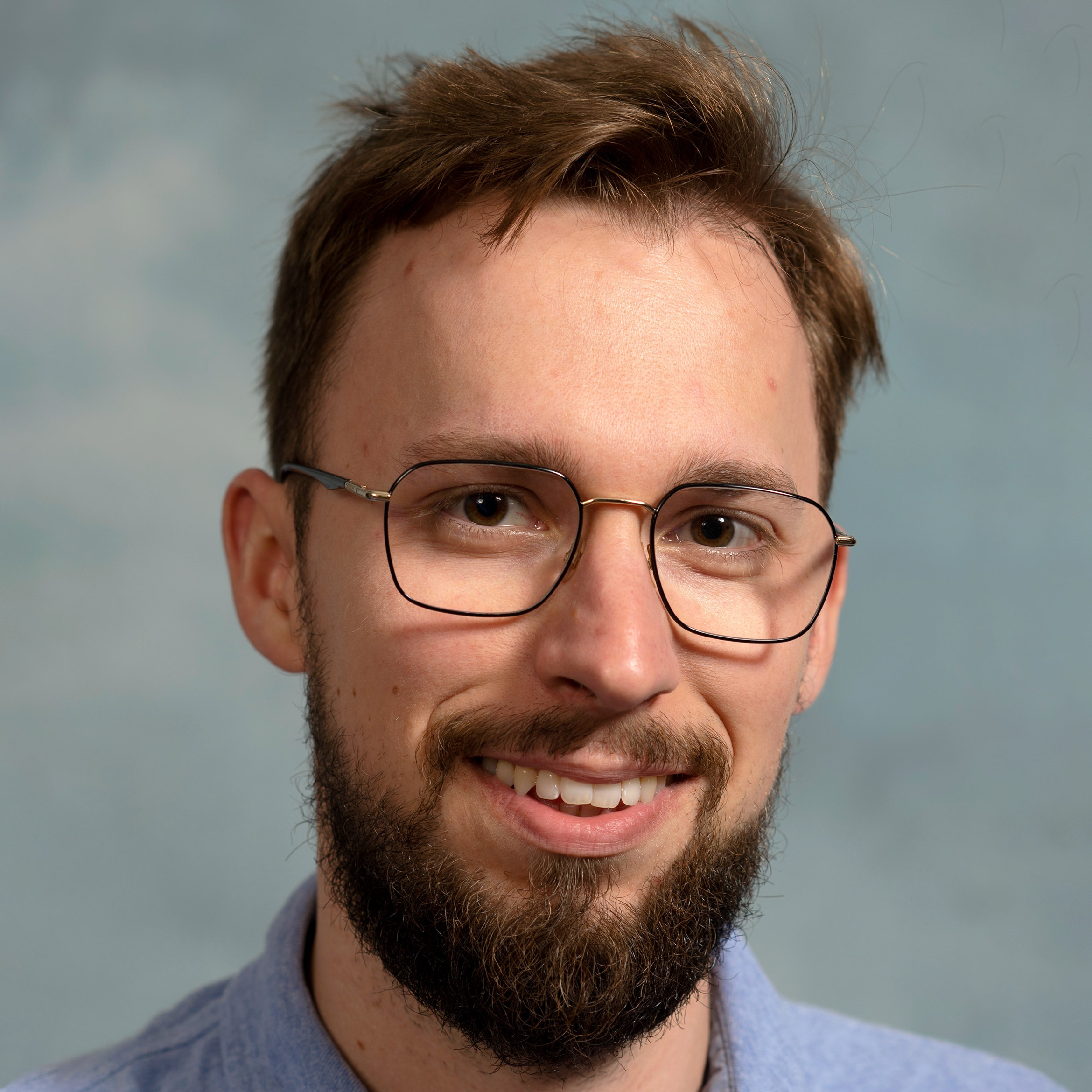
PIOTR KOLATA
Postdoctoral researcher (Blue-Sky fellow)
Piotr Kolata earned his MSc diploma in Molecular Biotechnology and Technical Biochemistry from the Lodz University of Technology in 2016. During his undergraduate studies, he gained practical experience in molecular biology, protein biochemistry, and structural biology through several international Erasmus exchanges and internships.
As an enthusiast of technology and photography, he became passionate about studying macromolecular machines by observing them in action. To pursue his interests, he did his PhD at the laboratory of Prof. Rouslan Efremov at the VIB-VUB Center of Structural Biology in Brussels, Belgium. He approached there one of the fundamental problems in bioenergetics: how does respiratory complex I transduce the free energy obtained from the redox reaction into the electrochemical proton gradient for ATP synthesis? To answer this question, he used single particle cryo-electron microscopy (cryo-EM) to resolve the first entire structure of E. coli respiratory complex I – the only extensively studied complex I homologue accessible for site-directed mutagenesis. He found it in a unique conformation leading him to propose a novel, hypothetical catalytic mechanism applicable to a whole class of evolutionarily related complexes.
For his postdoctoral work, he shifted his focus to a less-explored area of research – nuclear mechanics. He plans to use integrative structural biology to study the interaction between the nucleus and the cytoskeleton.Twitter: @PiotrKolata1

OLIVER KNOWLES
Research technical Assistant
I got a Bachelor in Molecular Genetics from Dundee Univ. followed by a Master’s in Regenerative Medicine at QMUL.
During my Master, I joined Miguel Branco’s lab, investigating co-option of regulatory elements in transposable elements (TEs). This, alongside some lessons learned in a new-found passion for programming, developed my interest in organisation of organisms, particularly in chromatin structures such as lamina associated domains (LADs).
I then worked as a research assistant in Delphine Larrieu’s lab and gained more experience in molecular biology and cell culture as well as a better understanding of the nature and functions of proteins at the nuclear envelope.
After collating my knowledge from different areas, my interests have veered towards patterns and forms of organisation within organisms, or even beyond like development, aging, evolution and ‘birds of a feather flock together’.
I am now working with Alia dos Santos to develop a new method to study nuclear envelope architecture, in addition to support many of the lab’s projects hoping to keep feeding my mindset with new perspectives and apply it in the future to understanding chromatin organisation.
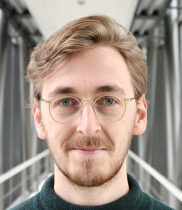
MART LAST
Postdoctoral researcher (EMBO fellow)
After studying Nanobiology at the Erasmus University of Rotterdam and Delft University of Technology for my BSc and Applied Physics with a specialisation in Bionanoscience at Delft University of Technology for my MSc, I started my PhD in 2021 in the group of Thomas Sharp at Leiden University Medical Centre. During this time I worked on the development of correlative single-molecule localization cryo-microscopy and cryo-electron tomography, or super-resolution cryo-CLEM. This work involved the design of a microscope specifically suited for cryo-SMLM, the development of data processing software for super-resolution cryo-CLEM, and the identification of fluorescent probes and sample carriers to improve the resolution of cryo-SMLM applied to cellular samples. By combining cryo-SMLM with the cellular cryo-ET workflow, the goal of this project was to enable accurately targeted cryo-ET and the identification of specific biomolecules of interest within the cell.
During this time I also became interested in alternative strategies for enabling targeted cryo-ET. I developed Ais (www.aiscryoet.org) – an application for tomogram segmentation – and Pom (crypom.streamlit.app). This last project was a part of an ongoing project to explore large-scale, targeted studies in cellular cryo-ET by leveraging the efficiency of machine learning for segmentation.
I joined Matteo’s group in January 2025, with the goal of applying these methods to the study of a relatively unknown biological phenomenon. While continuing the development of Ais and Pom, my focus is now to use cellular cryo-ET to investigate the molecular architecture of large filamentous assemblies of metabolic enzymes that form in response to various metabolic demands and drug treatments.
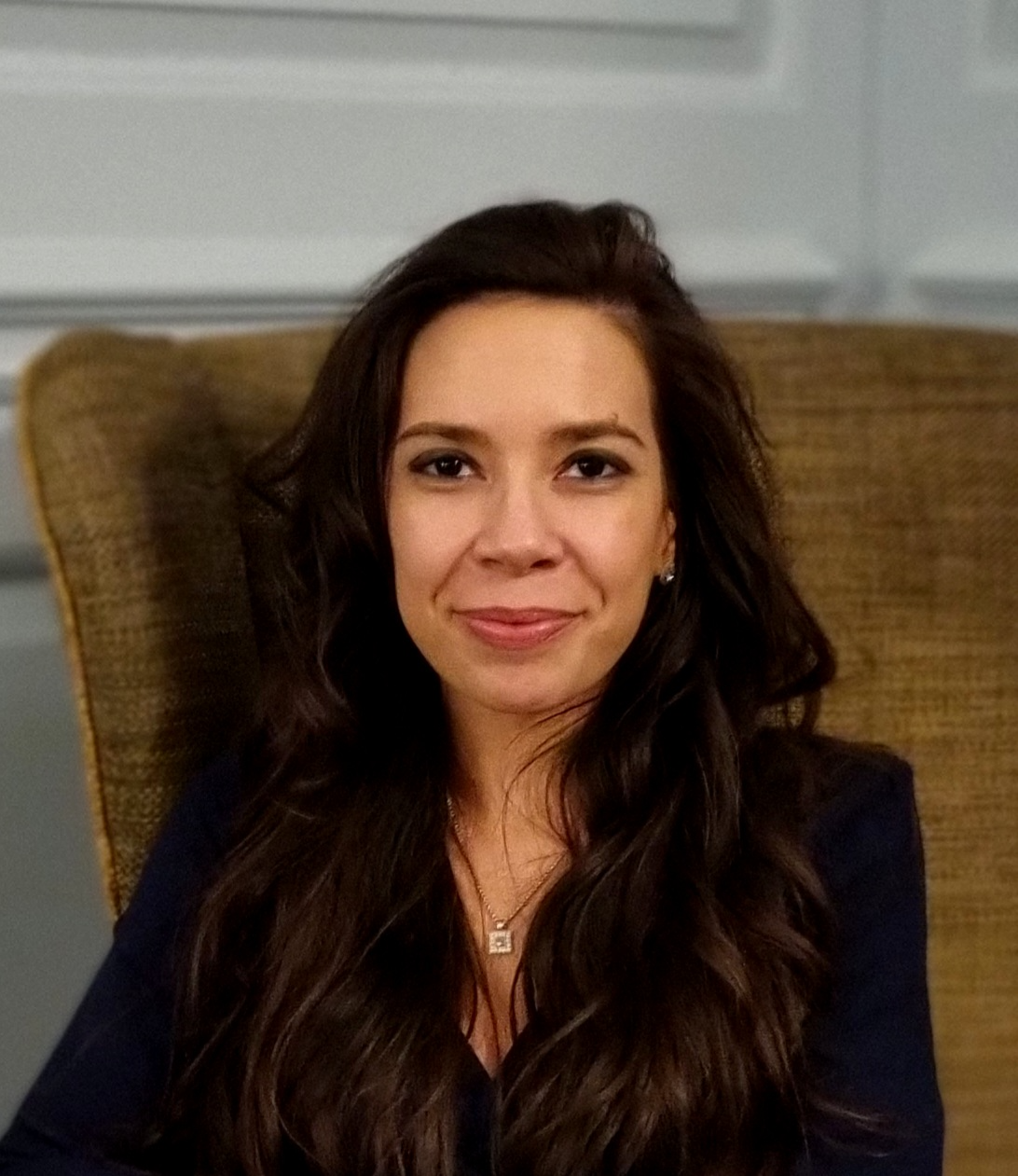
ÁLIA DOS SANTOS
Postdoctoral researcher (Wellcome Trust Early Career fellow)
I earned my bachelor’s degree in Biochemistry from the University of Lisbon in 2014, specialising in biophysical methods. During this time, I became interested in membrane protein complexes and joined the lab of Prof Kurt Drickamer at Imperial College London, as an ERASMUS student, to investigate the oligomerisation and stability of C-type lectins. After I graduated, I continued my research on transmembrane receptors in the lab of Professor Paula Booth at King’s College London.
I began my PhD with Dr Christopher Toseland in 2015, at the University of Sheffield. Using Atomic Force Microscopy and Super-Resolution Microscopy, I studied how DNA repair pathways affect global nuclear mechanics emphasising the importance of chromatin organisation in the physical and mechanical properties of the organelle. I also investigated the role of molecular motors, such as Myosin VI, and associated partners in the spatial organisation of transcription and other nuclear processes.
I joined the lab of Dr Matteo Allegretti at the MRC-LMB as Postdoctoral researcher in early 2022. I am employing cryo-TEM and cryo-CLEM for the structural characterisation of nuclear envelope components in situ. I am also interested in nucleo-cytoskeletal coupling during confined cell migration and nuclear envelope repair in physiological and premature ageing. I was awarded with a Wellcome Trust Early Career Fellowship in 2023.Twitter: @AliaCSantos
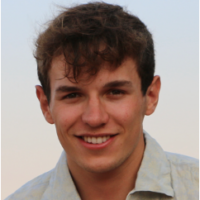
TOM HALE
PhD student
Tom Hale studied Biological Natural Science at Cambridge university. In 2022 he joined the lab as a part III student to investigate how the nucleus-cytoskeleton reacts to chemotherapeutic drugs.
As a PhD student he is now investigating human cells migration at the molecular level, using high-end light and electron microscopy techniques including cryo-FIB milling, electron cryo tomography and single particle cryo-EM. He is also developing new tools to investigate cell migration with cryo-EM.
Tom has a strong interest in cancer and structural biology, while aside from science he has another big passion in life: cycling.

VICTORIA HALE (VICKY)
Investigator Scientist and Lab manager
Victoria Hale obtained a Master in Biochemistry at the University of Bath. For her PhD she joined the group of Helen Saibil at the Institute of Structural and Molecular Biology at Birkbeck (London). There she used electron tomography, sectioning, electron energy loss spectroscopy and scanning electron microscopy to investigate membrane disruptions during the egress of malaria parasites from infected blood cells.
During her postdoc in the lab of Jan Löwe in MRC-LMB Cambridge she developed new grids for cryo-focused ion milling (cryo-FIB) and electron cryo tomography (cryo-ET) to trap bacteria in a vertical orientation to study cell division in situ.
Due to her passion for nanofabrication techniques and method development to address challenging biological questions, Vicky will continue developing novel tools to investigate nuclear migration in healthy and disease states using cryo-FIB and cryo-ET.
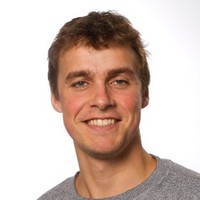
TOM DENDOOVEN
Postdoctoral researcher
As a postdoctoral researcher in David Barford’s group at the MRC Laboratory of Molecular Biology, Tom studied the native structure of the universal microtubule nulceator, the y-tubulin ring complex, with cryo-electron tomography (cryo-ET), and subtomogram averaging. He also investigated the kinetochore, which carries out chromosome segregation during cell division.
In his current position, Tom continues to use cryo-ET to dissect the architecture of nuclear-remodeling complexes in male gametes.
Beyond the lab, Tom likes to practice judo, go for a run and play the drums. Follow his work on X (formerly Twitter) at @TDendooven.

JYOTIKA KUMAR
Type III Master student
Previously, I worked in Dr Darerca Owen’s lab in the Department of Biochemistry, studying the dimerization of the kinase PKN1, and in Professor Karen Vousden’s lab at the Francis Crick Institute, where I investigated ferroptosis in mice lung cancer cell lines.
Outside my core studies, I have a strong interest in biotechnology, and hope to apply my scientific background in an entrepreneurial setting in the future.
Alumni
Callum Ormsby, summer student enrolled in the faculty of Biological Natural Sciences at the university of Cambridge. He worked in the nucleus-cytoskeleton interaction in human cells.
Amin Jazaeri, summer student enrolled in the faculty of Biolmedical Engineering at the university of Michigan (USA). He worked in the design and fabrication of new grids to investigate nucleus-cytoskeleton interactions in human cells.
